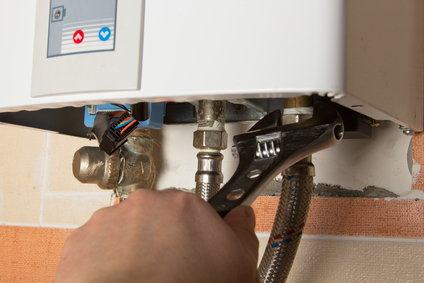Tankless Water Heaters in Multi-Generational Homes: Can One System Handle It All?

As more families choose to live together across multiple generations, homes are seeing heavier and less predictable hot water usage. From grandparents to teens to toddlers, everyone has unique schedules, and that means showers, laundry, and dishwashing often overlap. The question many homeowners ask is: can one tankless water heater really keep up with such a high demand—or does a multi-generational home need more than one system?
Why Multi-Generational Homes Push Hot Water to the Limit
Unlike a single-family household where hot water routines are more predictable, multi-generational homes often face simultaneous demand. Morning showers may overlap with breakfast cleanup, or laundry might be running while someone else is using the kitchen sink. Traditional tank-style heaters often run out of hot water during these peak times. A tankless water heater, however, heats water on demand—but its performance depends on flow rate and system sizing.
Understanding Flow Rates and Simultaneous Use
Tankless systems are rated by gallons per minute (GPM). For example:
- A shower uses 2–2.5 GPM
- A dishwasher uses about 1.5–2 GPM
- A washing machine averages 2 GPM
If your household is running two showers (5 GPM) plus the dishwasher (2 GPM), your home could need 7 GPM simultaneously. Not every tankless unit can handle that capacity. This is where professional system sizing becomes critical.
Whole-House vs. Point-of-Use Systems
There are two common approaches:
- Whole-House Tankless Unit: A larger system, often 8–10 GPM capacity, designed to handle simultaneous use across the home. This works well if hot water demands peak in specific windows, such as mornings and evenings.
- Point-of-Use Units: Smaller tankless units installed near specific fixtures (such as a bathroom or kitchen). These reduce strain on the main system and eliminate wait time for hot water. In some cases, combining a central whole-house unit with one or two point-of-use systems provides the best balance.
Real-World Examples of System Sizing
Consider a four-bathroom Upstate South Carolina home with seven residents, including two teenagers, grandparents, and parents with young children. A professional evaluation may recommend:
- One whole-house tankless water heater rated for at least 9 GPM
- A supplemental point-of-use unit for the in-law suite’s bathroom to reduce competition during peak usage
On the other hand, a smaller three-bathroom home with five people might get by with just one 8 GPM unit if schedules are slightly staggered.
How Professionals Evaluate Your Home’s Needs
As a preferred Upstate South Carolina plumber, we don’t just install a unit—we assess your household’s water use patterns, appliance efficiency, plumbing layout, and even the hardness of your water. This professional approach ensures your system is not only sized correctly but also optimized for comfort, efficiency, and longevity.
Smart Configurations and Modern Technology
Today’s advanced tankless models often include features like recirculation pumps for faster hot water delivery and Wi-Fi monitoring to track usage. These smart systems allow homeowners to see when their peak demands occur and adjust habits—or system settings—accordingly. In some multi-generational setups, linking multiple units together provides seamless supply without overloading a single system.
Final Thoughts
While one tankless water heater may handle the needs of a multi-generational home, the right answer depends on your household size, routines, and hot water usage patterns. Professional sizing and system design are key to ensuring your family never runs out of comfort.
For expert solutions in Upstate South Carolina, call Mathis Plumbing & Heating Co., Inc. today to see if a tankless water heater is right for your home.
